Note: This was posted on the Lead Adventure Forum a good while ago, and long before this blog. Given our up-coming ‘After Dorking’ battle, I’ve decided to replicate things here.
This Christmas my wife gave me a little gem of a gift from Dodo Press, 'The Battle of Dorking; Reminiscences of a Volunteer' written by George Chesney in 1871.
This marvellous little short story charts an alternate history following the Franco-Prussian War, when Britain hastily declared war on Prussia...
I finished the book on boxing day and immediately set about turning this into a wargame. I decided on Baccus' Polemos FPW rules, and purchased a British and Prussian army from Pendraken Miniatures. This week we began what will likely be a 2-3 week battle at the club.
And so, here's part 1 of the Battle Report for...
The Battle of Dorking 1871 (Reminiscences of a Volunteer)
Objectives
Panic was spreading out of Whitehall as the initial counter-attack at Brighton was crushed. A hasty defence line was formed across the North Downs, and the British threw everything they had into the fray. Most brigades were filled with militia and untrained volunteers who only a week or two before were farmers and clerks. The Dorking Gap was a weak
point in the defensive line, representing a vital road and rail
junction through to London, however with most of the better formations committed to defending Guildford and Reigate, the line at Dorking was held by raw troops, bolstered by a single regular brigade of Scots Guards and a squadron of cavalry. Their only real strength was the artillery batteries from Winchester. With this rag-tag force they had a simple order; ‘hold Dorking and the ridge between Guildford and Reigate at all costs and for as long as possible’.
The Prussians were advancing north following their unopposed landings on the south coast. Initial British counter attacks at Brighton had been repelled easily and the fresh divisions were now heading towards London with all haste. Two main attacks were focussed on Guildford and Reigate, but between them the Prussian command had identified the town of Dorking as a key objective. It was a road and rail hum and the Dorking Gap represented the only easy route north across the North Downs ridge. Three divisions were dedicated to taking this town and given expressed orders to do with quickly and with minimum losses.
Leatherhead and Epsom lay beyond and it was anticipated that these towns would also be defended. So the battleground was set…
Deployment
The previous night had been chaotic for the British. The troops in Dorking had forcibly evacuated most of the civilians north by train and road. At the same time, troops had flooded in from all directions.
Tired and thirsty, looting and violence had broken out in and around Dorking as discipline among the raw soldiers broke down. By 10am order had been restored and the three divisions had been deployed along the North Downs Ridge, with a sizable garrison in Dorking itself. At dawn a brigade of Scots Guards arrived from Guildford and hastily deployed into Dorking. More troops and reinforcements were expected to arrive shortly to bolster the thin red line defending the way through to London.
To the west of the town, the inexperienced troops followed the orders of their brigade commanders and deployed their artillery throughout the line. In Dorking itself and to the east, the artillery formed into powerful batteries.
The British commanders chose not to position troops in the forward position south on Leith Hill, ceding the ground to the Prussian skirmishers who were left to scout unhindered.
The British 'thin red line' to the east of Dorking on Box Hill
The strong point in Dorking
The line to the west between Dorking and Guildford
Meanwhile, the Prussians advanced steadily through the night, careful to conserve their strength. Forward skirmishers made it onto Leith Hill and were able to survey the chaos in the town overnight. They also marked the dispositions of the deploying British allowing their commanders to form their plan of attack. Unfortunately there was some confusion over the severity of the southern ridge terrain meaning some of the Prussian artillery was poorly deployed. A single division was dedicated to engage Dorking directly from the south, while two full divisions were focussed on an identified weak point in the British line for about a mile west of the town.
The main Prussian advance to the west of Leith Hill
The overall starting deployments...
The battle (morning)
At 10am the battle began proper with the Prussians scaling the Leith Hill ridgeline en masse.
A single division was tasked with harassing Dorking from the south east, mainly to prevent the British redeploying, and to exploit any opportunities.
They advanced in good order, deployed their heavy artillery in range and proceeded to shell the British artillery in the south of the town, throwing them into disorder and bringing them to the point of breaking.
Only desperate efforts from the local battery commanders prevented the British gunners from abandoning their positions and fleeing north..
Meanwhile two Prussian divisions fell over themselves in the desperate, chaotic struggle up the ridgeline. Once over and through the light woods on the gentle northern slope they found themselves walking into sporadic British artillery bombardments.
Command confusion reigned and the Prussians struggled to deploy their artillery to support the infantry who were now advancing across the road to attack in column up the main North Downs ridge. Only six of the available fourteen batteries set up in time to support the first attacks.
The Prussian infantry struggled up the main ridge into the teeth of the British brigades and batteries arrayed across the crest.
Vicious close fighting took its toll on the Prussians and at the point of the focussed attack many battalions fell back in disarray, but remarkably only a single battalion broke. Despite these losses, the raw British troops wavered and fell back from the crest opening a gap for the Prussians to exploit.
By 1pm, two further British brigades had arrived, one north of Dorking, the other over on the western flank, but in the middle things were looking troublesome for the British. The stifling heat of the morning, that had slowed the Prussian advance, had broken into a cooling light rain, and the Prussians were beginning to press their advantage.
Word had reached both the British and Prussian commanders in the area that the Prussians had broken through to the west at Guildford…
By mid-afternoon, the battle developed into three distinct actions.
In the centre, the Prussians continued their remorseless march up the North Downs ridge to the west of Dorking. The remaining British troops there, consisting raw conscripts, steadily broke and fled from the disciplined Prussian close action. Soon a gap about a mile wide on the hilltop was open and the Prussians were pushing their reinforcement through.
The British desperately tried to redeploy their batteries to enfilade the Prussians, but the dastardly Hun's quick marching got through the danger zone before much damage could be inflicted.
The Prussians had broken through the final line of defence! London now lay before them...but not quite yet. The British division perched on Box Hill, and who had not moved all morning, now upped stumps and marched through Dorking to meet this threat.
The massed Prussian batteries were finally able to take a rest,
watching with satisfaction as the infantry flooded through the holes the guns had made.
The British reserves from the west also began to march over to cover the gap.
The Prussians however had a couple of battalions already at the railway line north of Dorking (actually these troops had conducted an uncontrolled pursuit and found themselves fortuitously out of position!) and so were ready to meet the main body of British troops marching over from Box Hill.
The second action took place at about 3.30pm. News had reached both forces a couple of hours earlier that Guildford to the west had failed to stop the Prussians breaking through. Freed from that battle an entire Prussian division hastily marched through the rain to attack Dorking. Their arrival was a surprise to the Prussians as much as the British!
The British line turned about to meet these exhausted Prussians before they could get themselves organised...
...however, the Prussian discipline told and they were able to form a decent defensive line in time to meet the raw British troops.
The British had, however, stopped the Prussians advancing on Dorking, for now at least.
By mid afternoon, the third and perhaps most crucial action began in earnest. All morning the Prussian and British artillery had exchanged fire to the south of Dorking itself. Finally the superior Prussian fire began to tell and the British positions faltered.
The Prussian infantry went into the city around 3.00pm driving off the remaining batteries.
However the south of the town was held by the elite Scots Guards and so the Prussians didn't quite make the headway they were expecting, and with the British raw troops swinging out from the northern suburbs, bitter close ranged fighting broke out across the south of the town and the surrounding farmland.
So, as the evening approaches and the battle moves into its final phase the Prussians definitely seem to have the upper hand having broken the British line and with their forces now in Dorking itself. But things still hang in the balance. The British still have enough force in the field to hold the line, if only they can get their inexperienced troops into the right positions.
However, the more experienced commanders of the Prussian army sit confident on their horses...they see the line is broke and are sure that Dorking will fall, and the road to London and victory will be open by sunset...
As the afternoon wanes and the rain gets heavier, things are looking bleak for the British. The Prussians have broken through to the west of Dorking, but there are enough British left to plug the gap, with an entire fresh division still on Box Hill to the east.
And the action opens at the Prussian breach. The forces there reorder themselves after the hard fighting up the North Downs ridge and turn on the exposed flanks of the British to the west.
The British battalions struggle to redeploy as the raw troops and inexperienced commanders panic at the advance of the professional Prussian soldiers along the crest of the ridge. The British reinforcements are tied up dealing with the Prussian division that arrived from Guildford earlier in the afternoon.
And after a few more hours, as the rain fell harder and the light of the day began to wane, the British line collapsed completely.
The British division double-timed off of Box Hill, flooding in columns round the north of Dorking. If only they could form a defensive line here they may yet halt the exhausted Prussian troops.
Unfortunately a fresh Prussian line had filed into position to meet and stop the British cold. The brave British men who only a week or two before had been farmhands and clerks couldn't match the sheer ferocity of the close fighting of the Prussians and the attempted reinforcement was halted and fell into disarray.
Meanwhile, in Dorking itself, Prussian artillery finally told and the British guns broke, opening the way for the main Prussian infantry assault on the town itself. The British Guard battalions stepped up to meet the dastardly Bosh in the alleyways of the south of the town and held their lines well...
...but the raw conscripts to the west gave way under sustained Prussian artillery and infantry fire opening the way into the north of the town.
Even the Prussian reserve heavy cavalry came out for a bit of the show!
Dorking was overrun, the North Downs ridge was open and as night fell, the remaining British troops broke and fled north into London. Nothing now stood between the Prussian invaders and the surrender of the British government...it was all over.
And so our battle had the same outcome as George Chesney's short story!
Interestingly, none of the players had read the story beforehand, but the battle played out almost exactly as it was described by Chesney.
Their deployments, and battle plans were almost identical. The only difference i saw was that in Chesney's story, the guards come out of Dorking whereas the players ensured they remained in the town.
It was an excellent battle, lots of fun, and a real challenge for both sides.
After Dorking 1871: The Battle for Cherkley Wood
After Dorking 1871: The Battle of Crawley
After Dorking 1871: The War in Africa, The Battle of Bundas
After Dorking 1871: The War in Africa, The Battle of Bundas - Part 2
After Dorking 1871: The Battle for Cherkley Wood
After Dorking 1871: The Battle of Crawley
After Dorking 1871: The War in Africa, The Battle of Bundas
After Dorking 1871: The War in Africa, The Battle of Bundas - Part 2
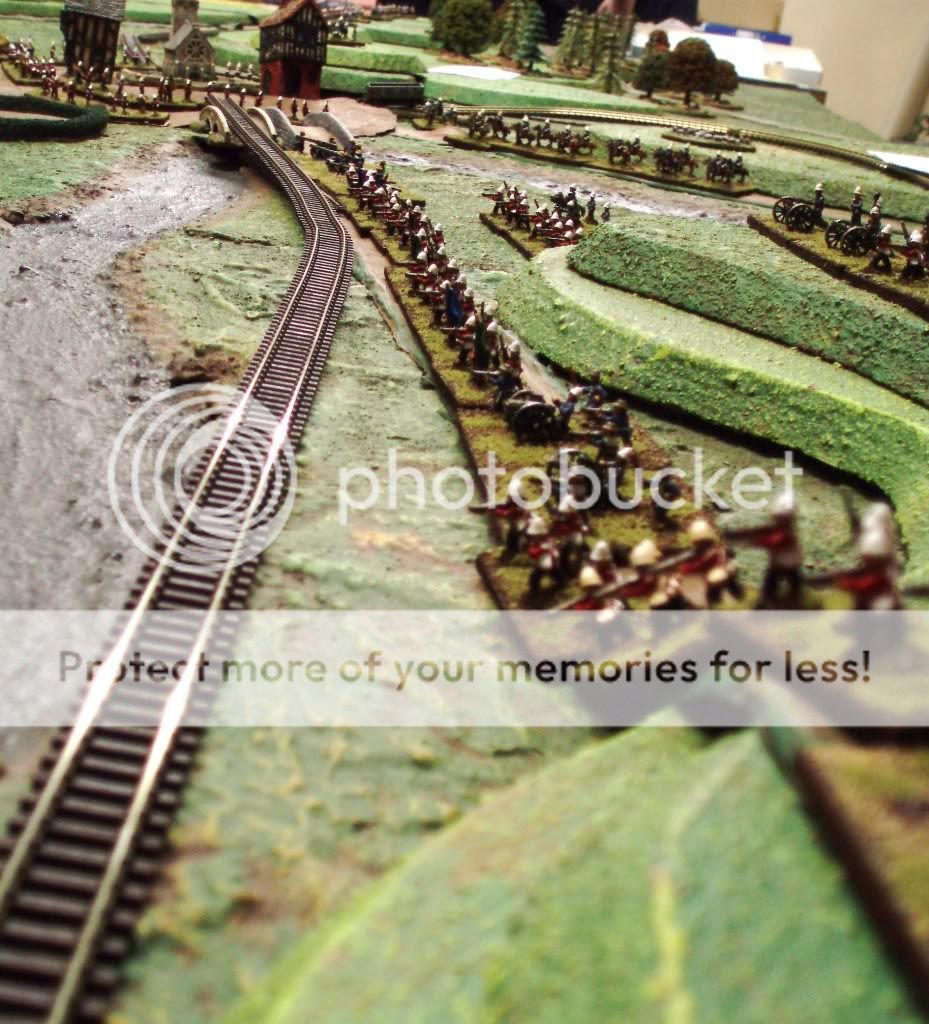
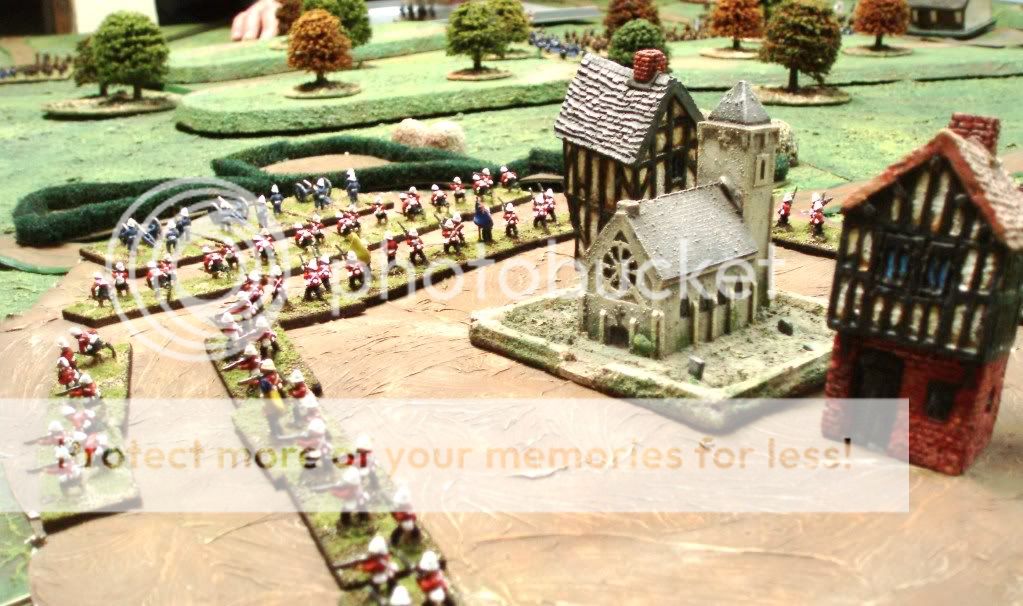

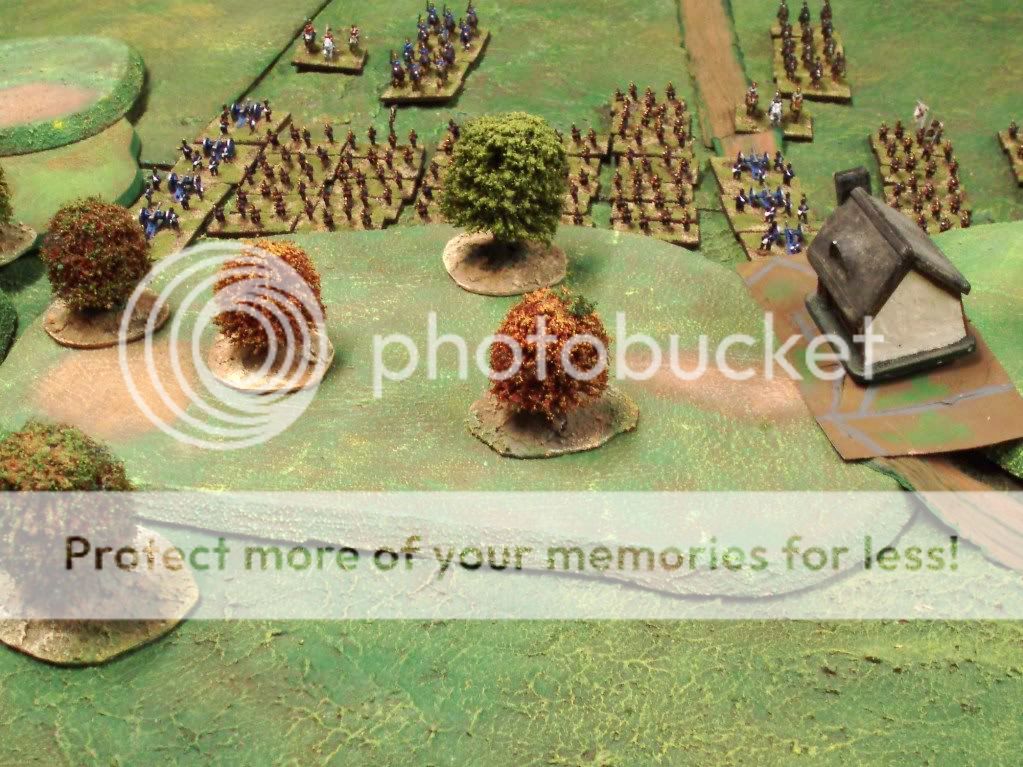
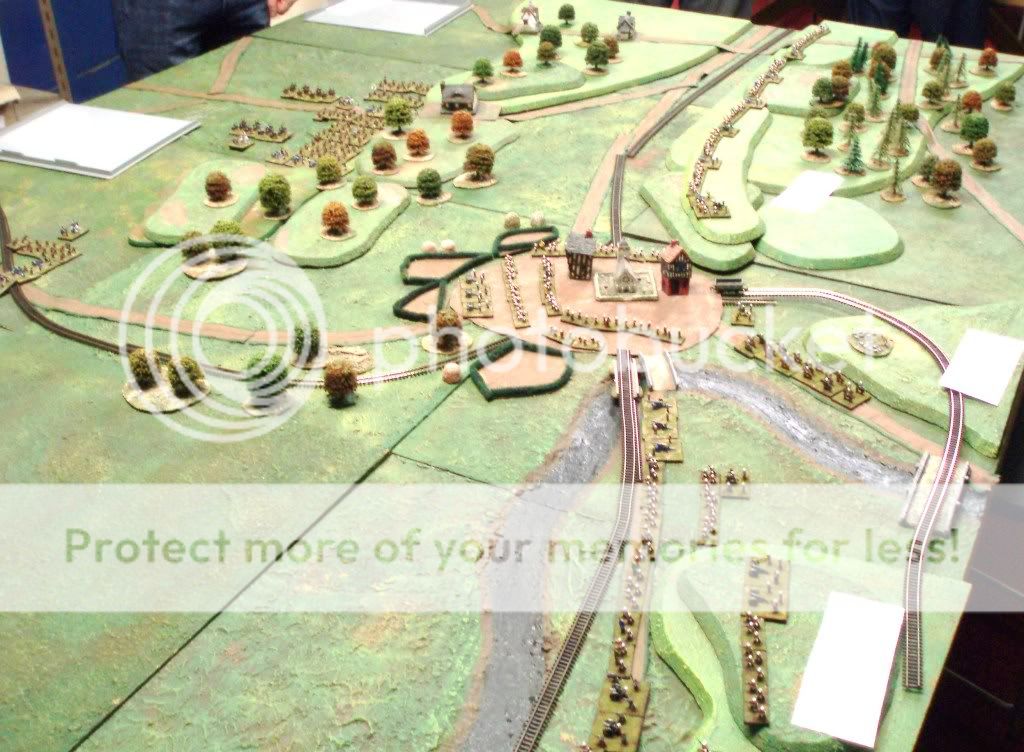

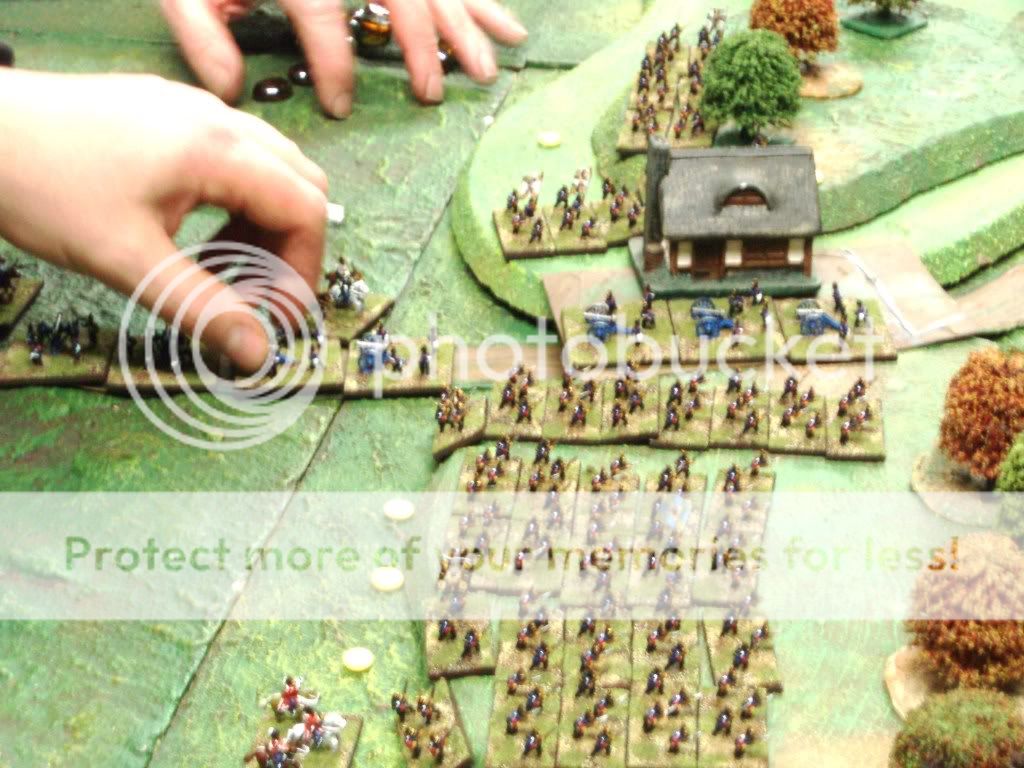
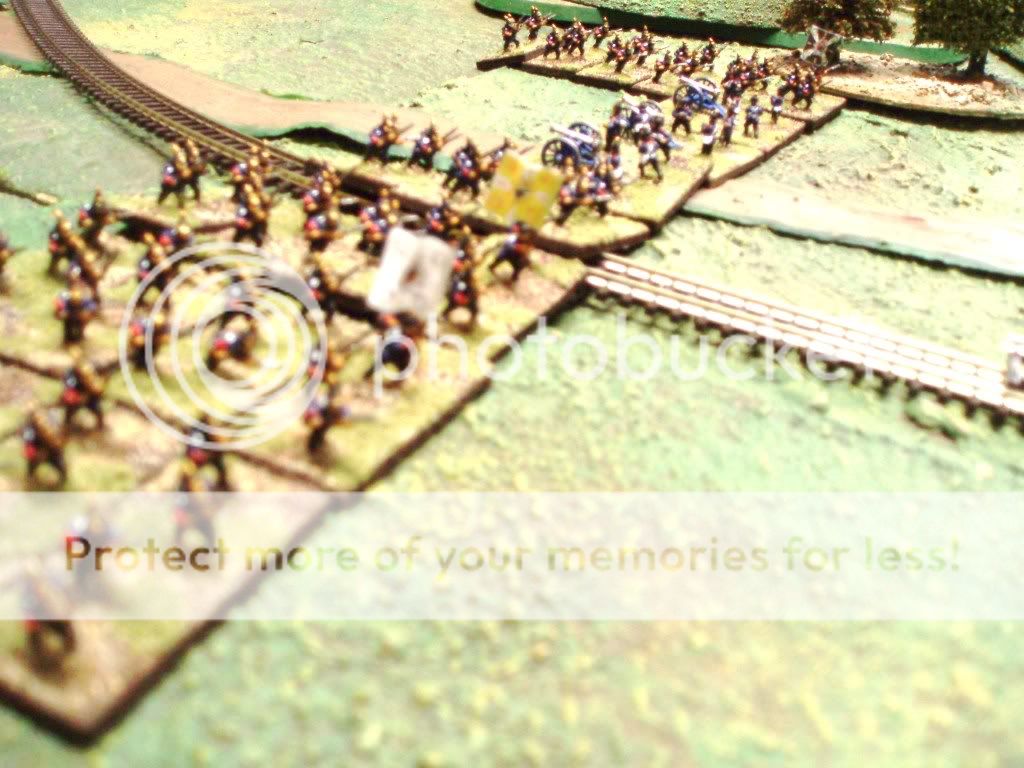
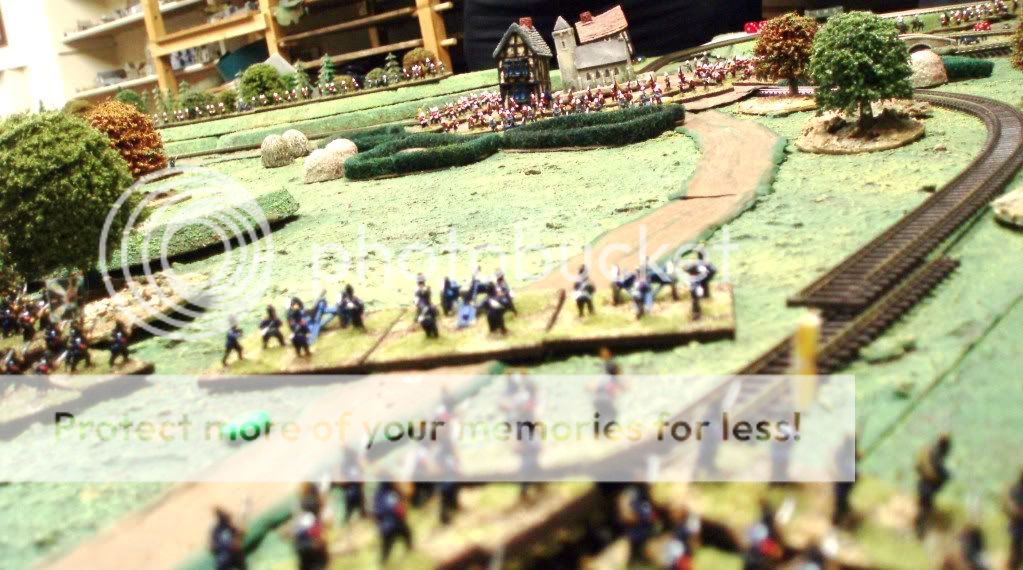
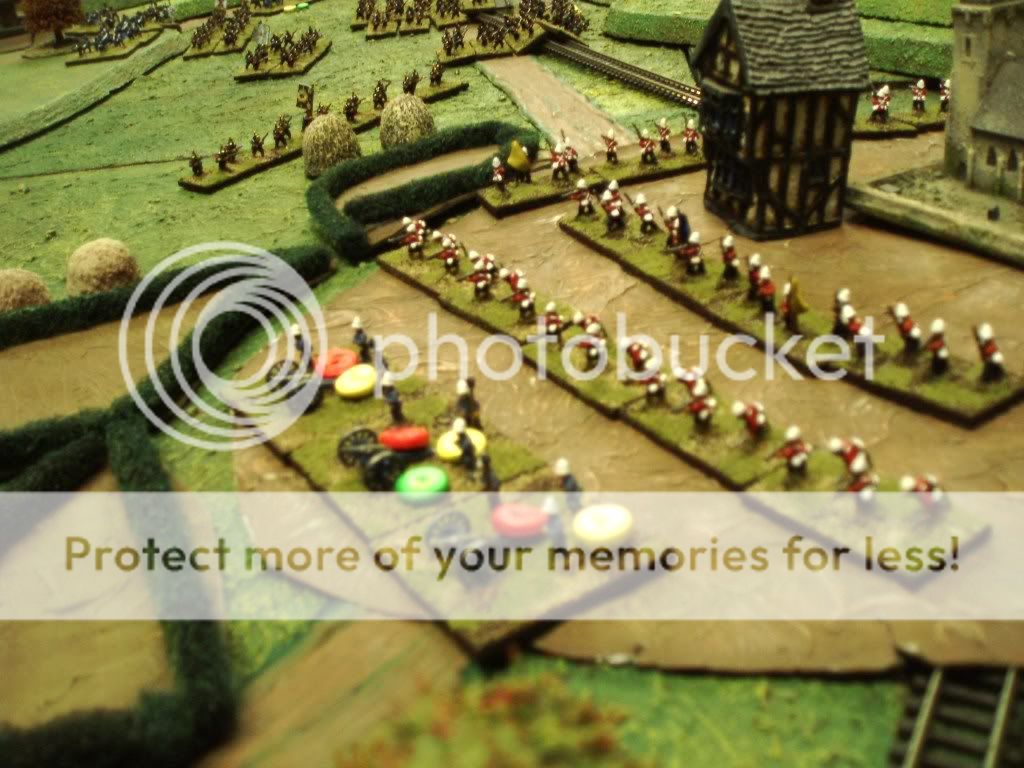

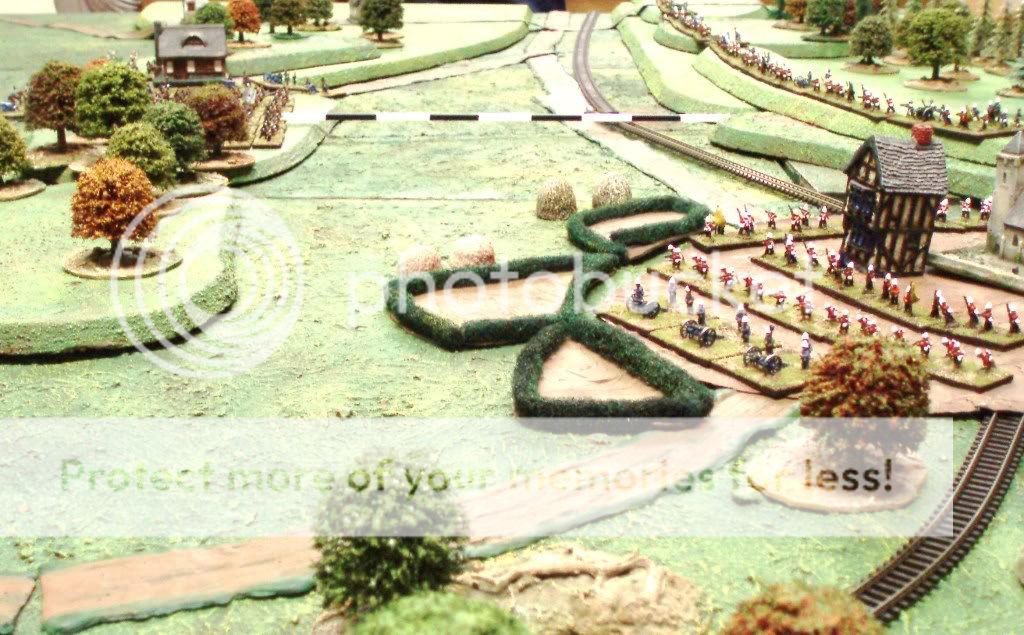
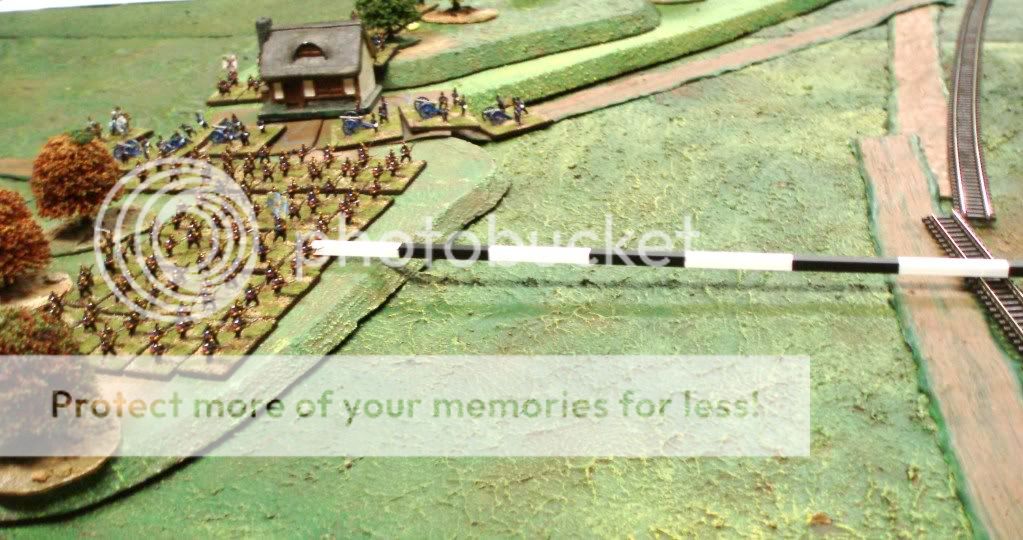
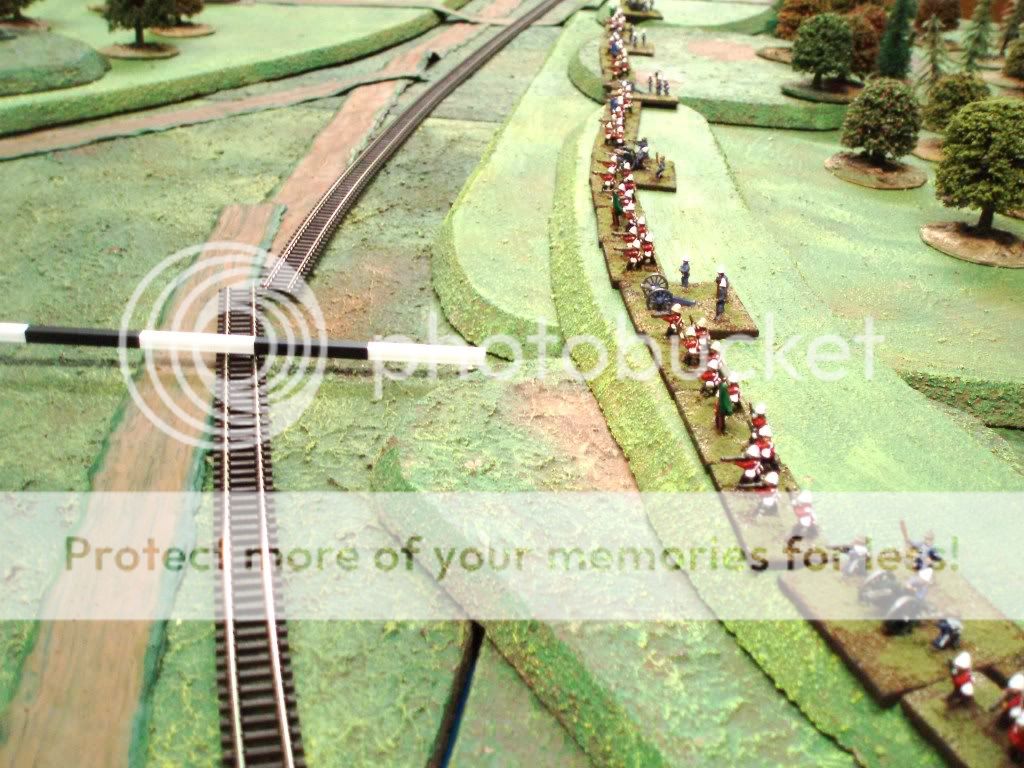
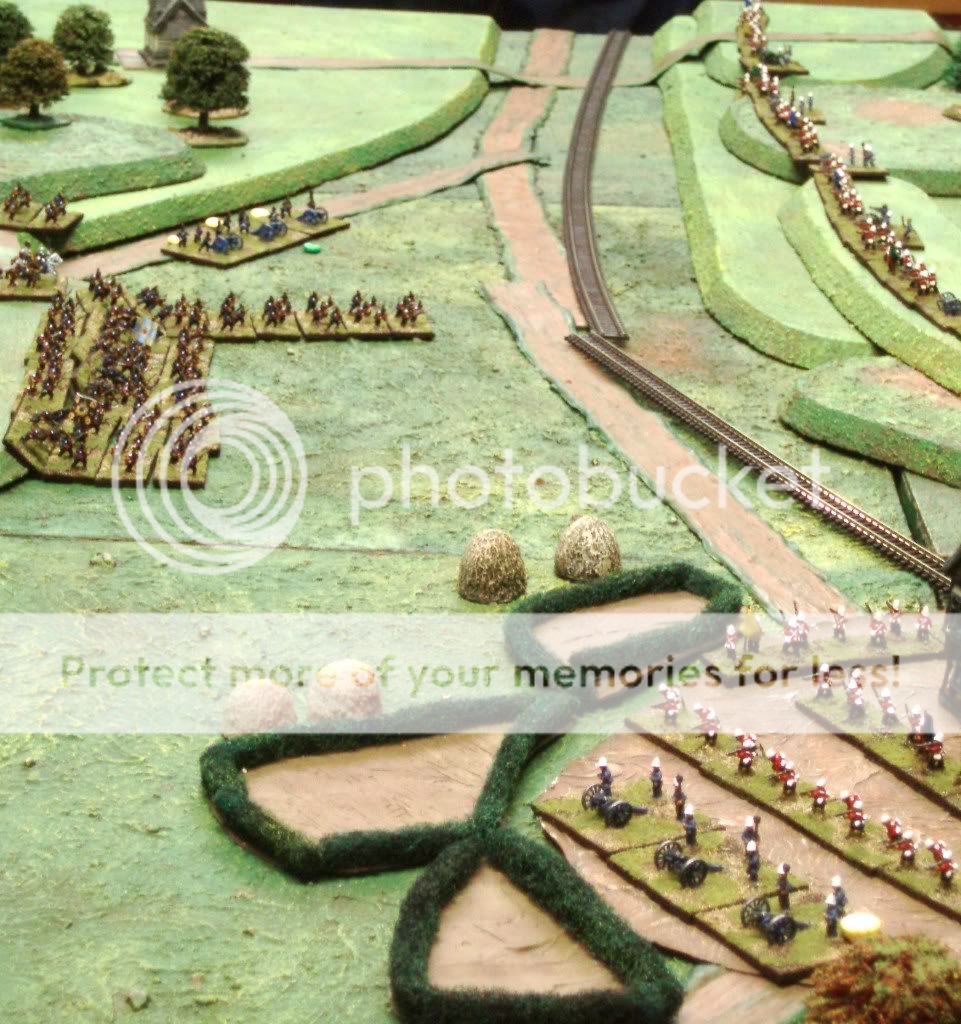
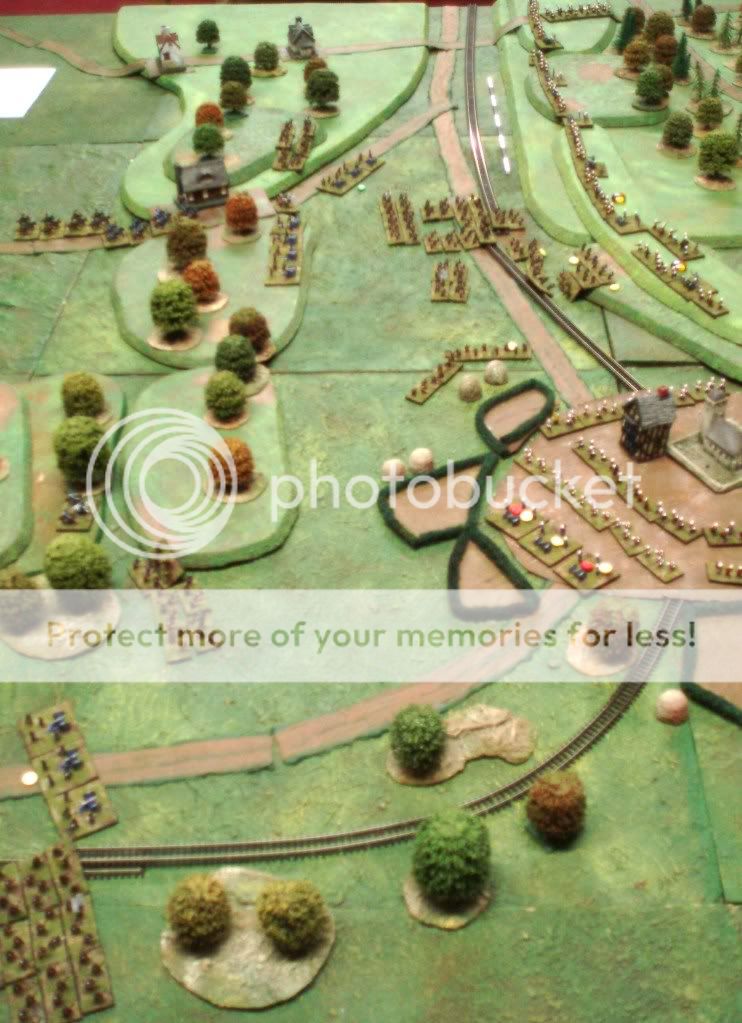
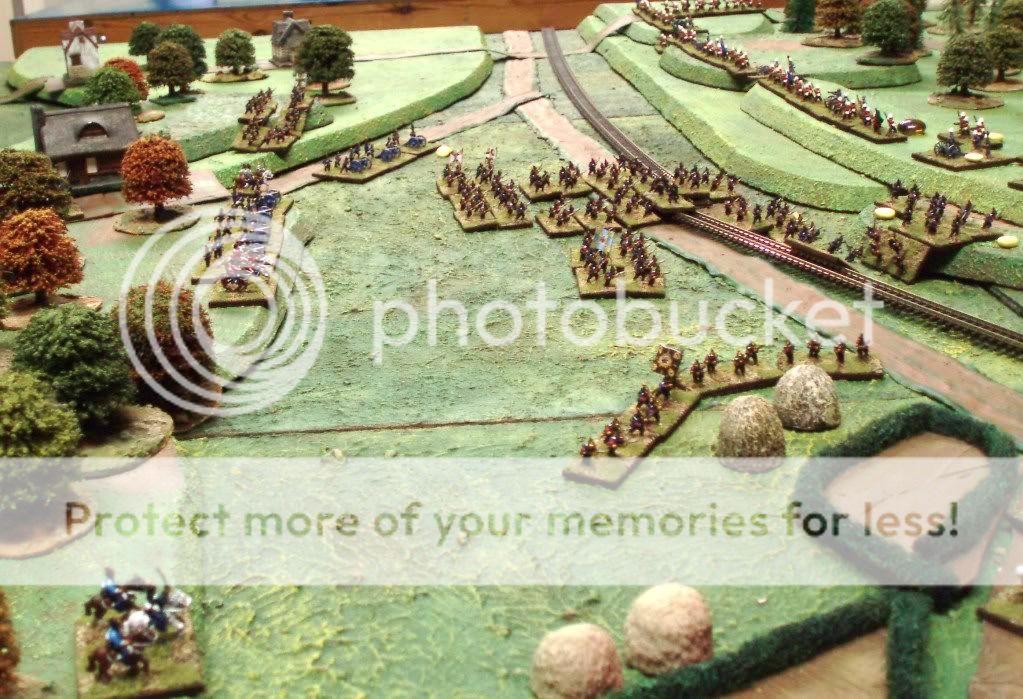
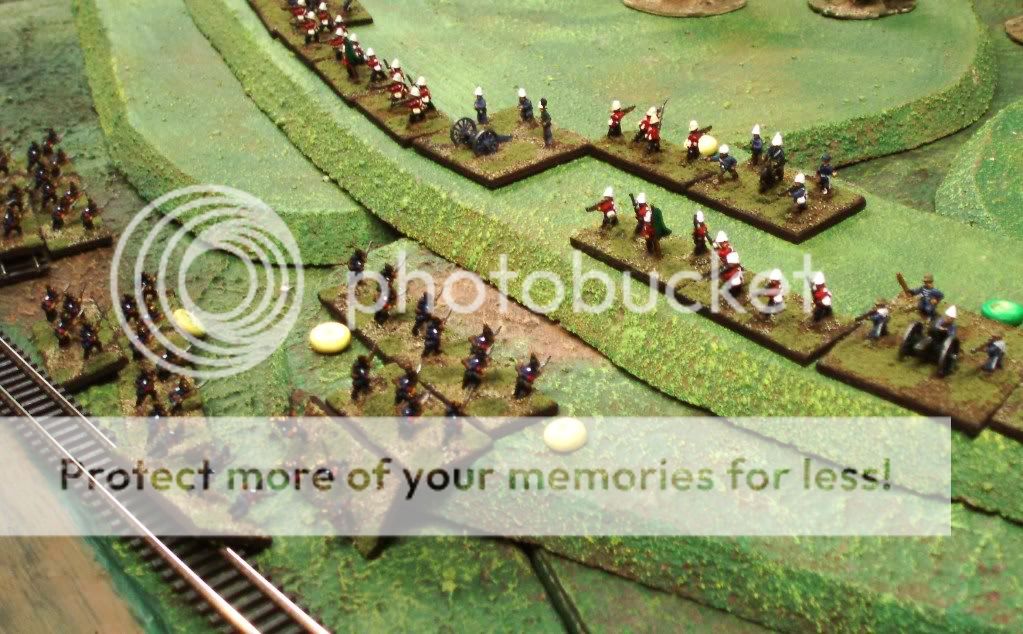
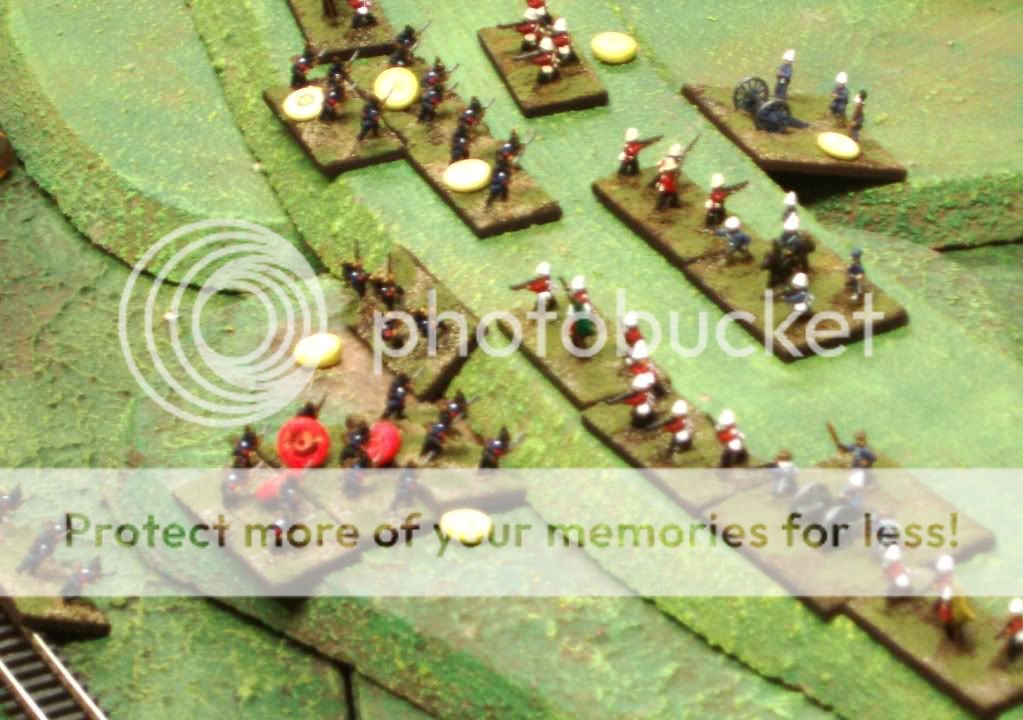
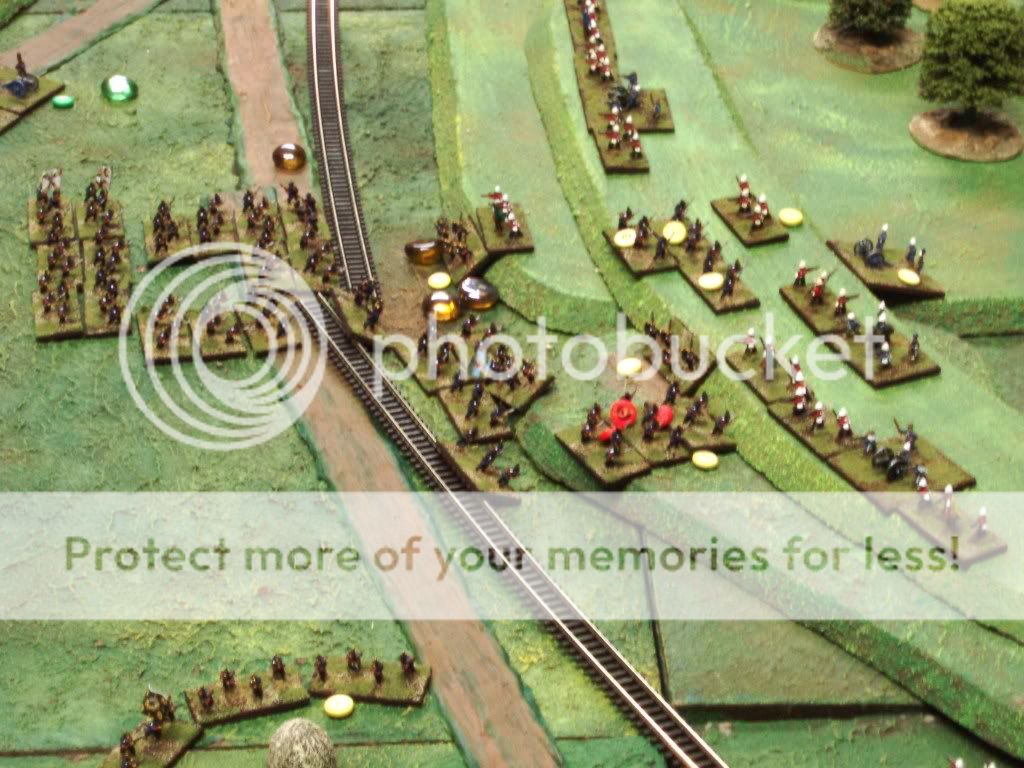
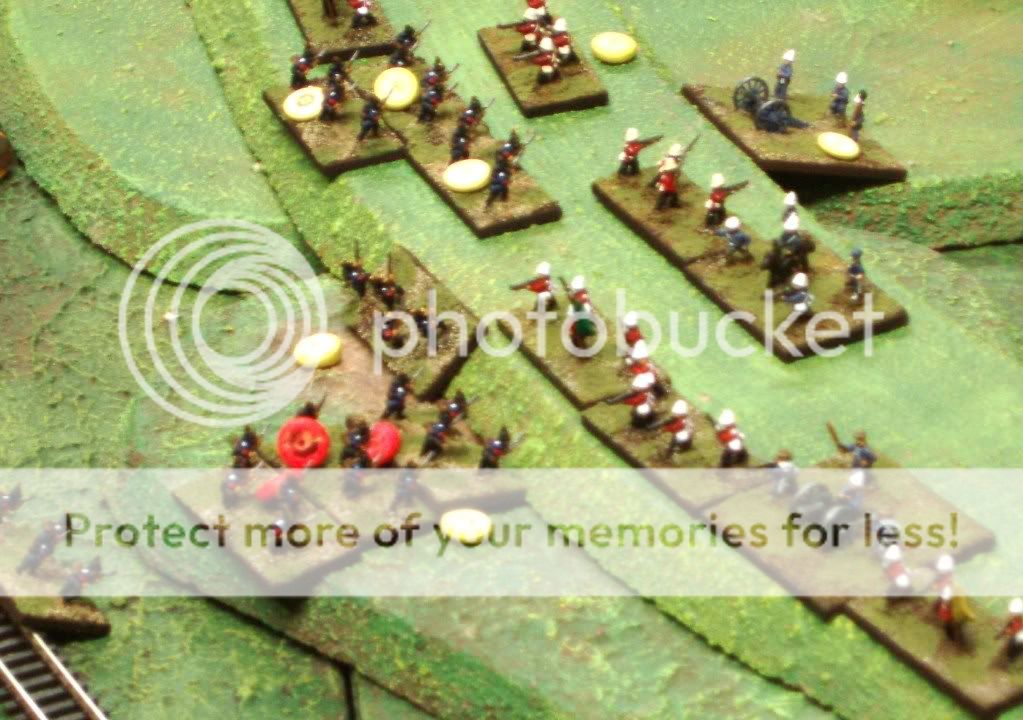
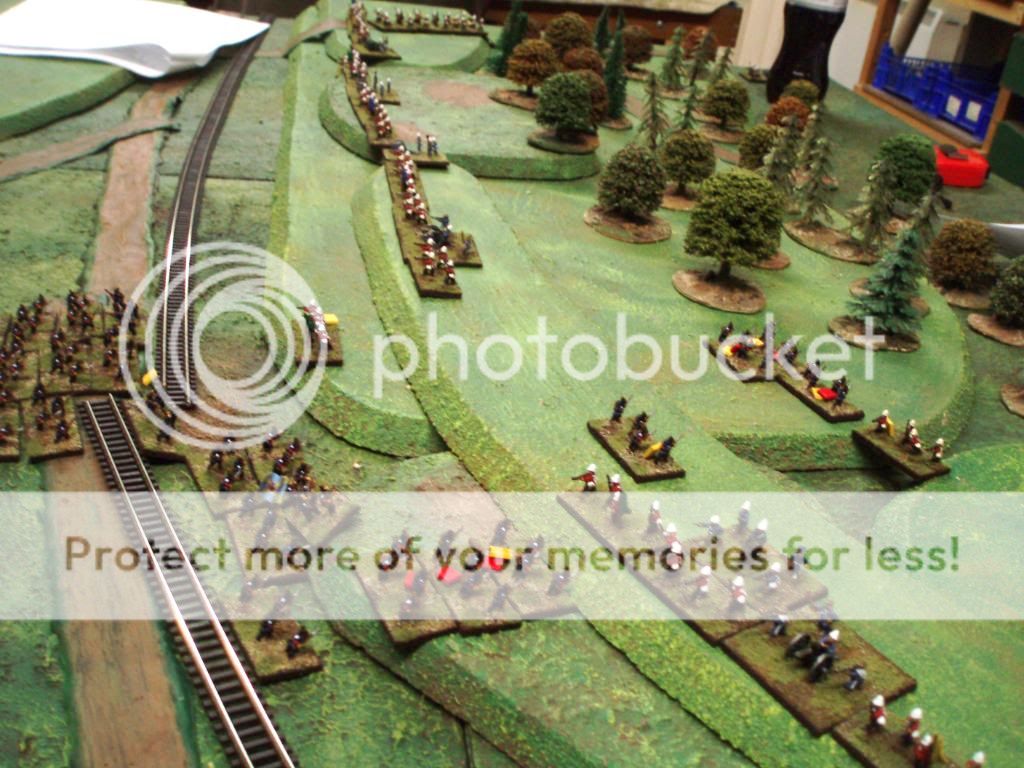
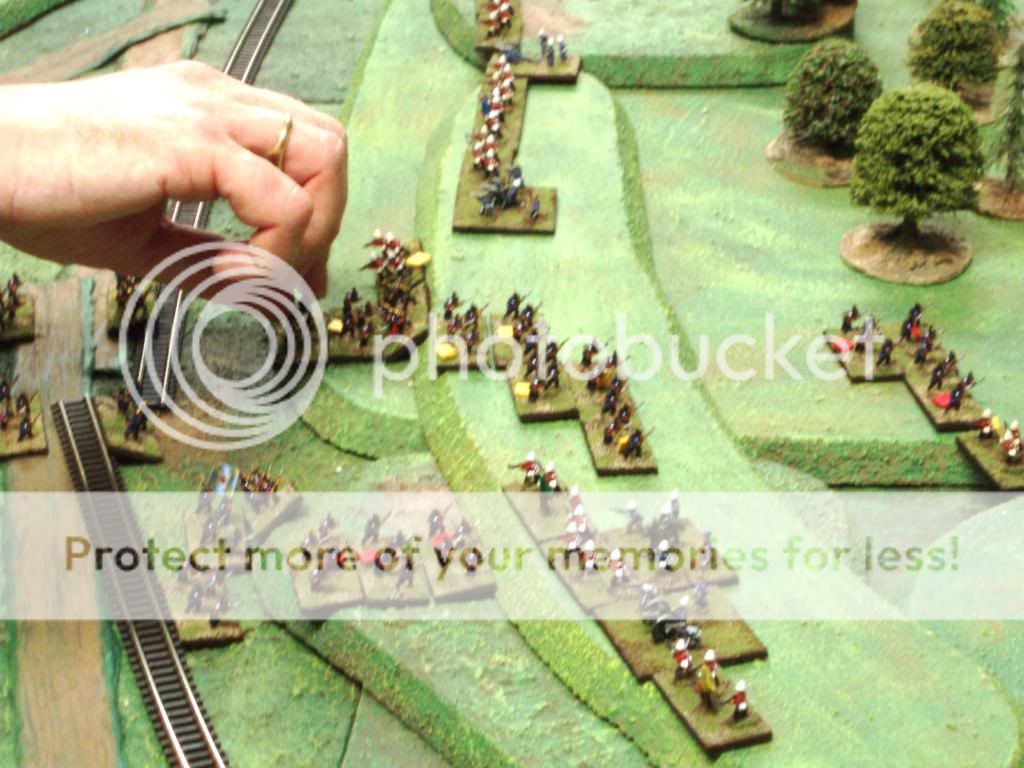
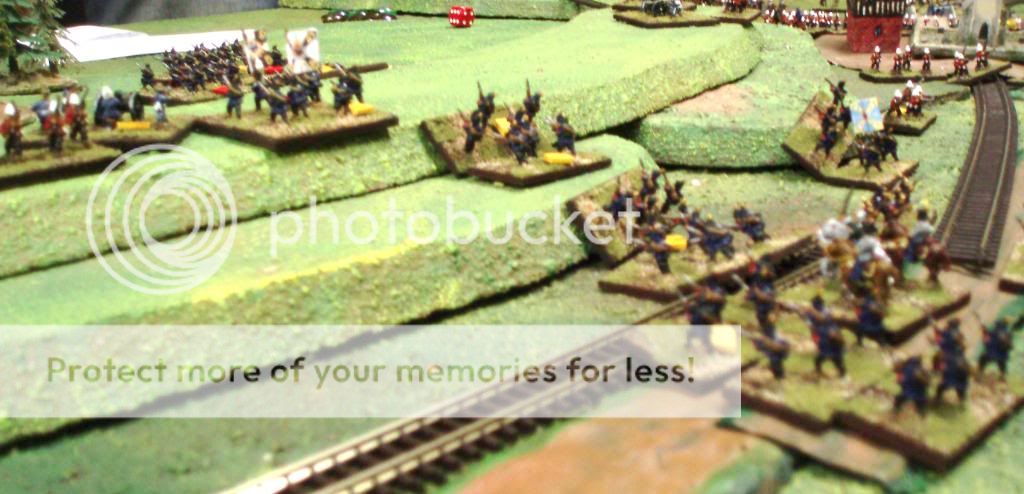
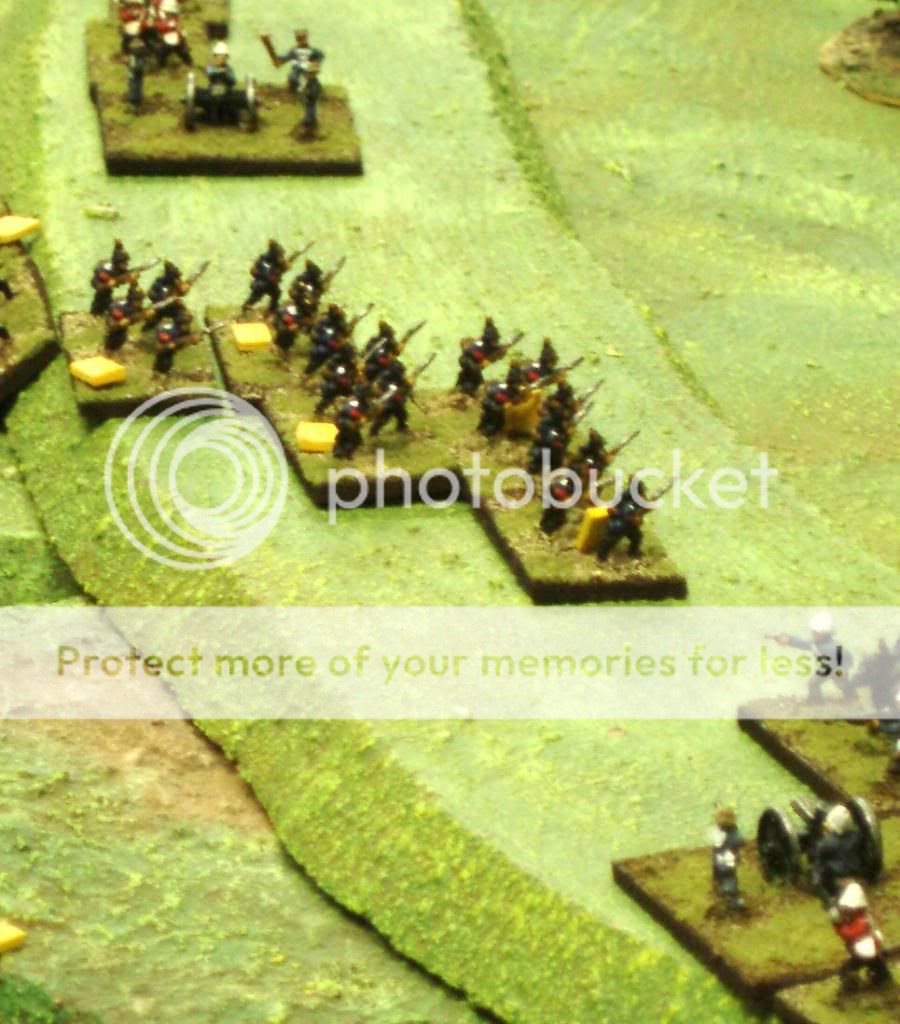


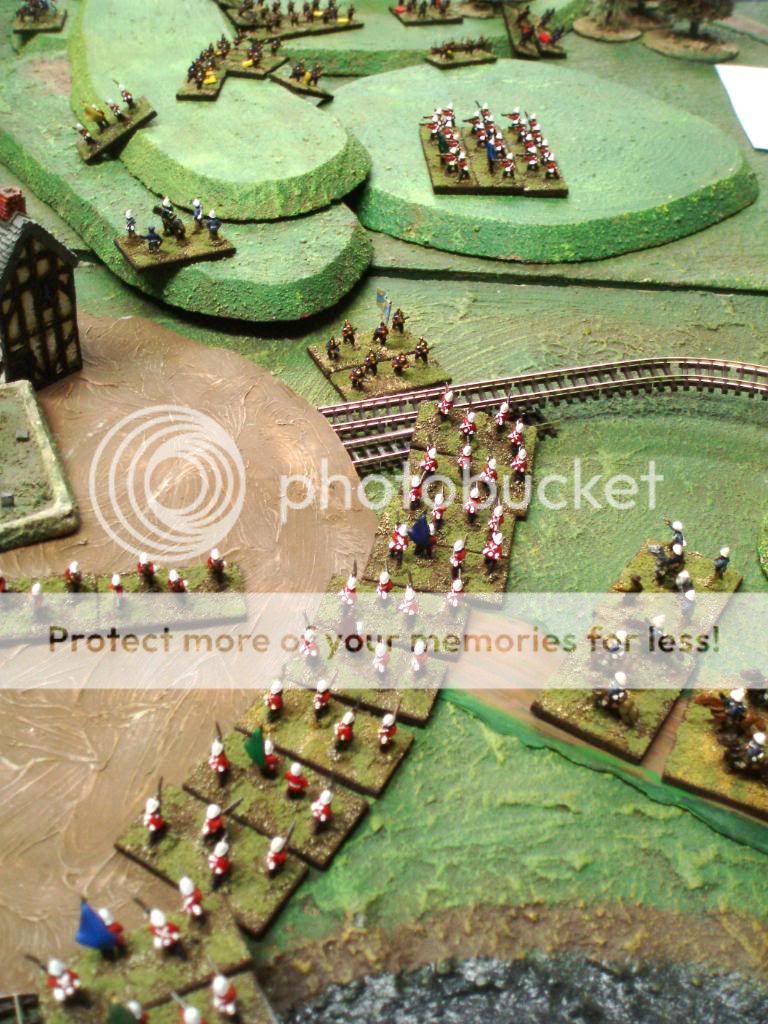

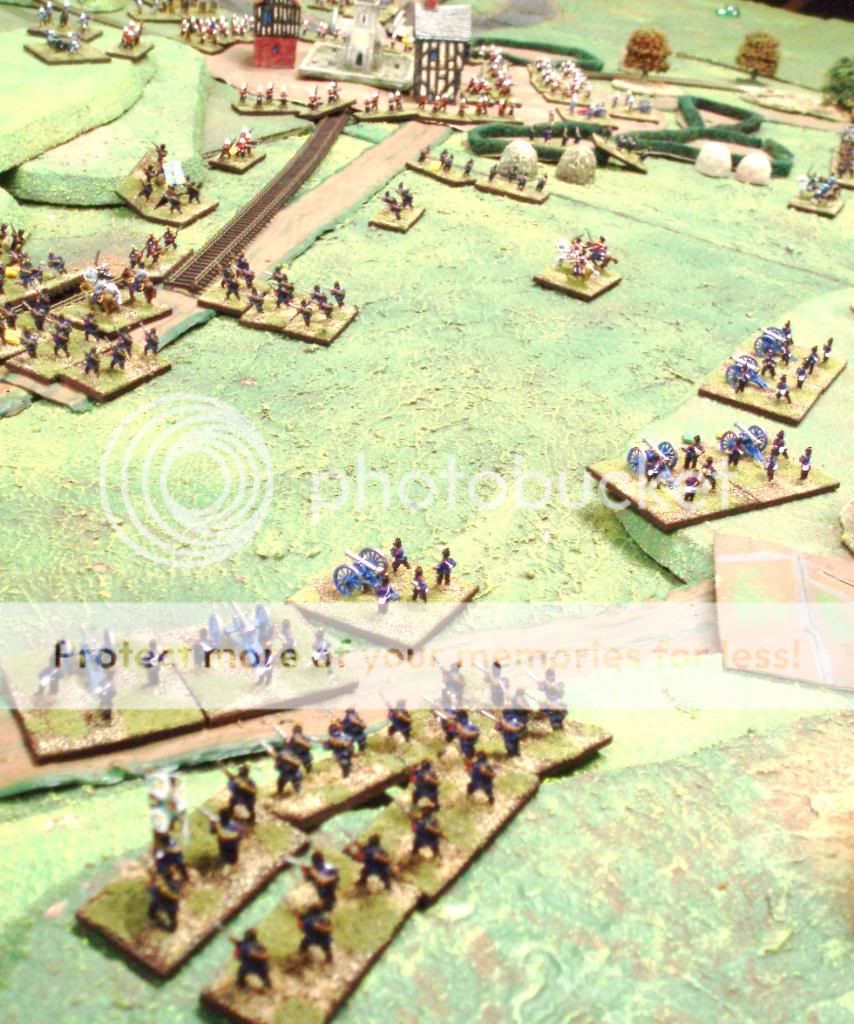

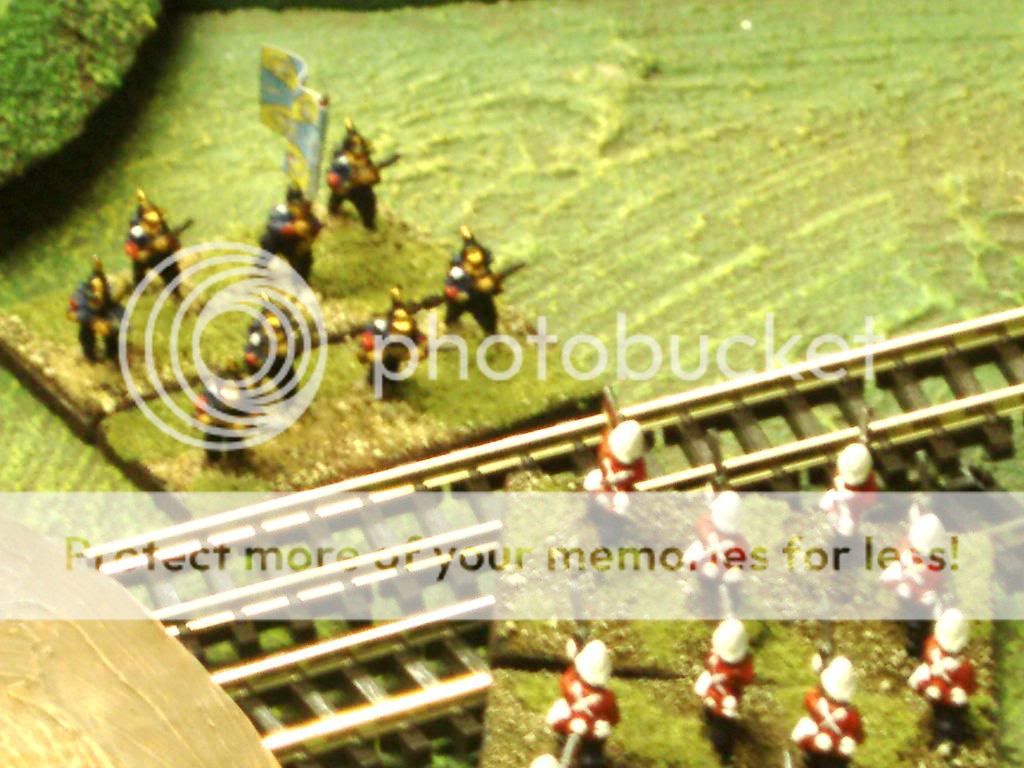
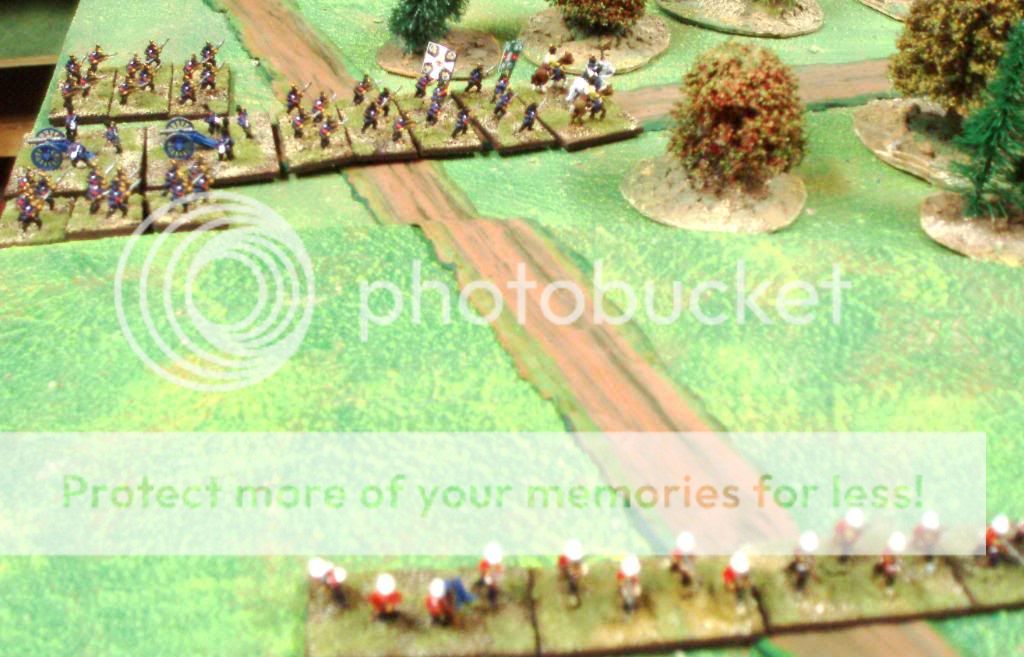
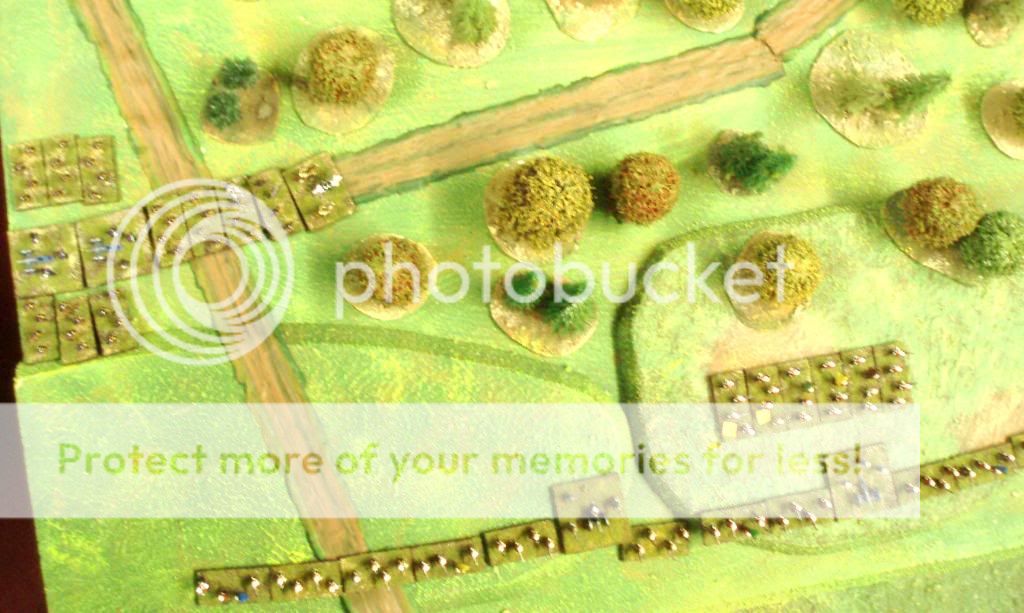
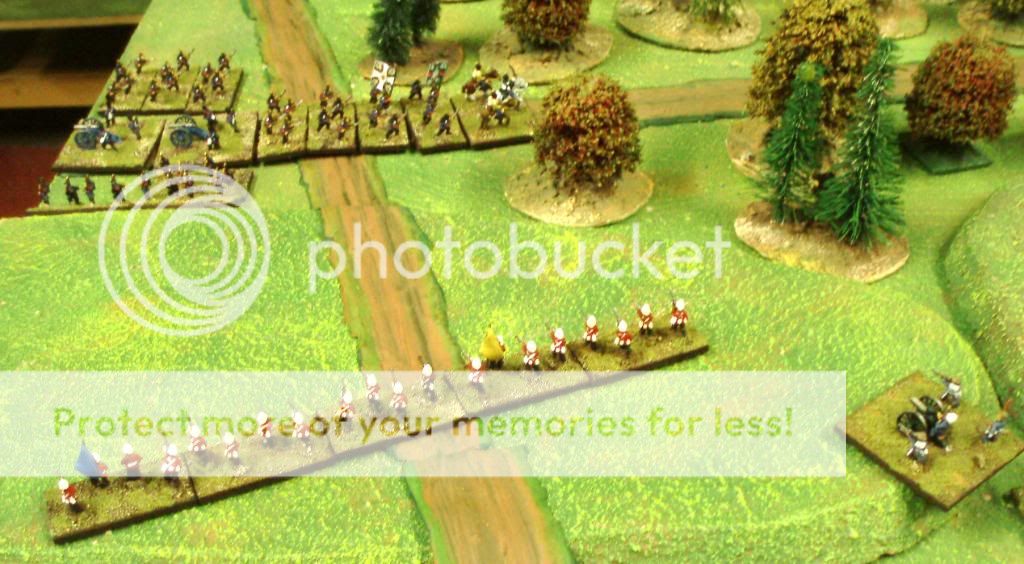
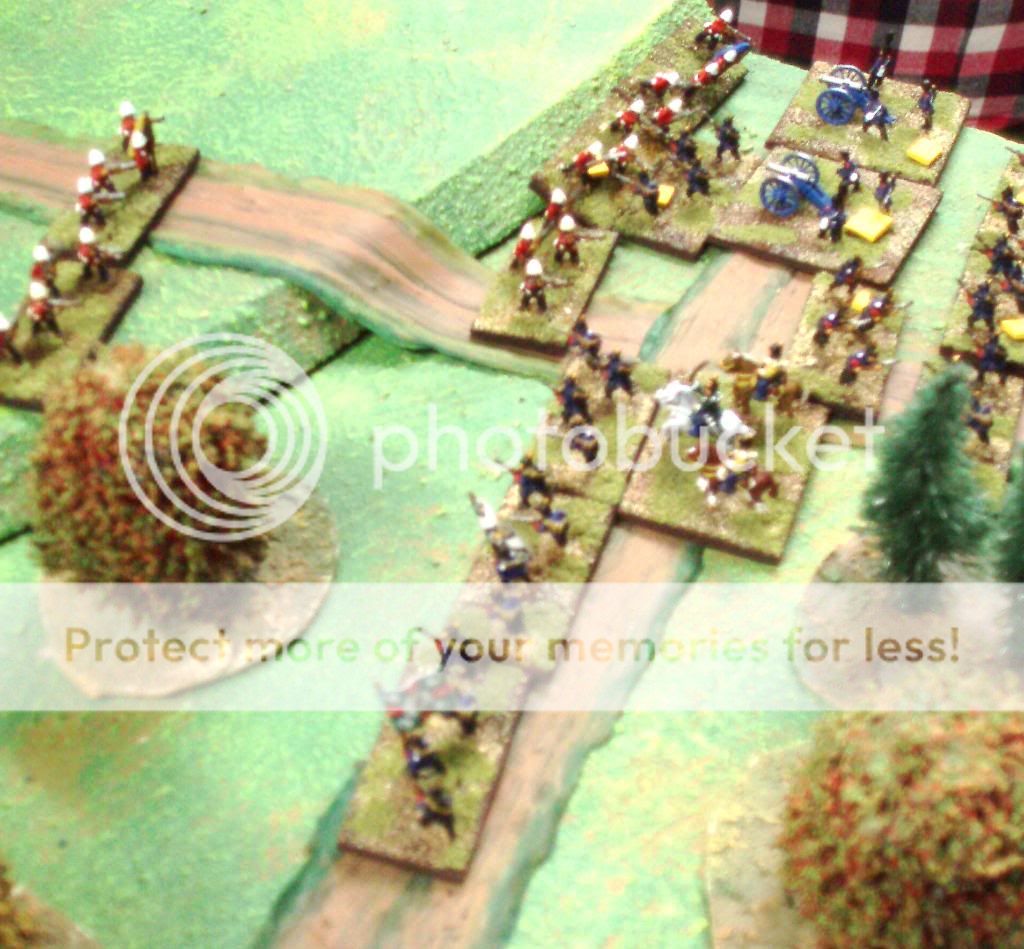

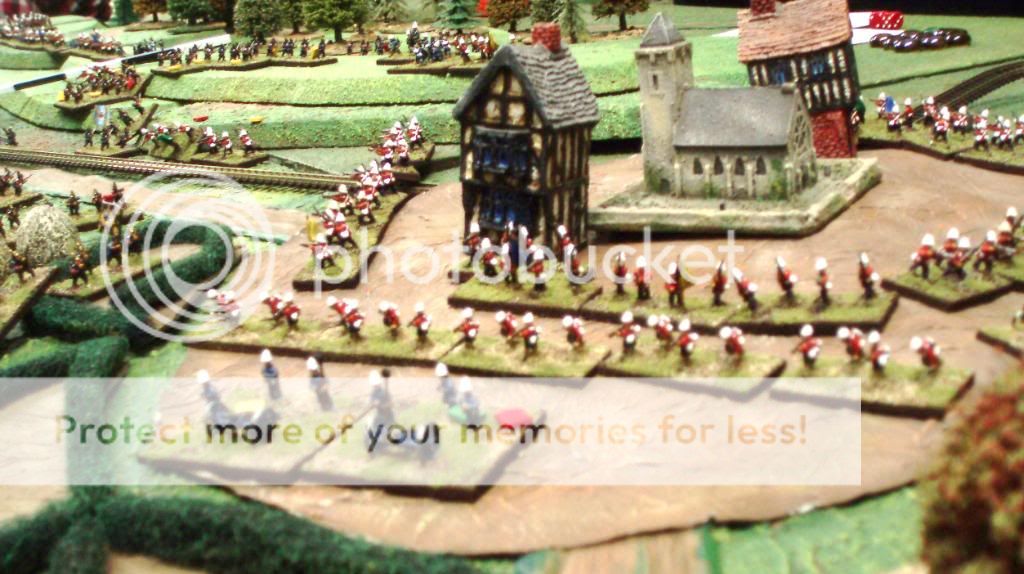

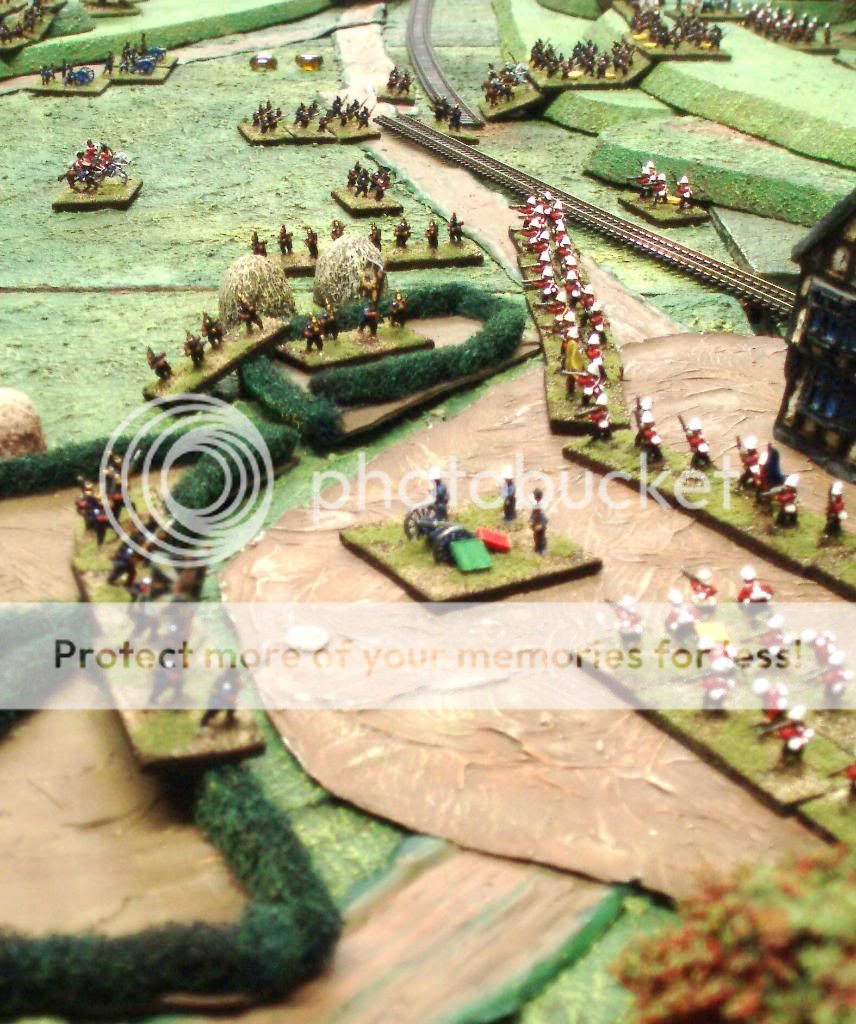

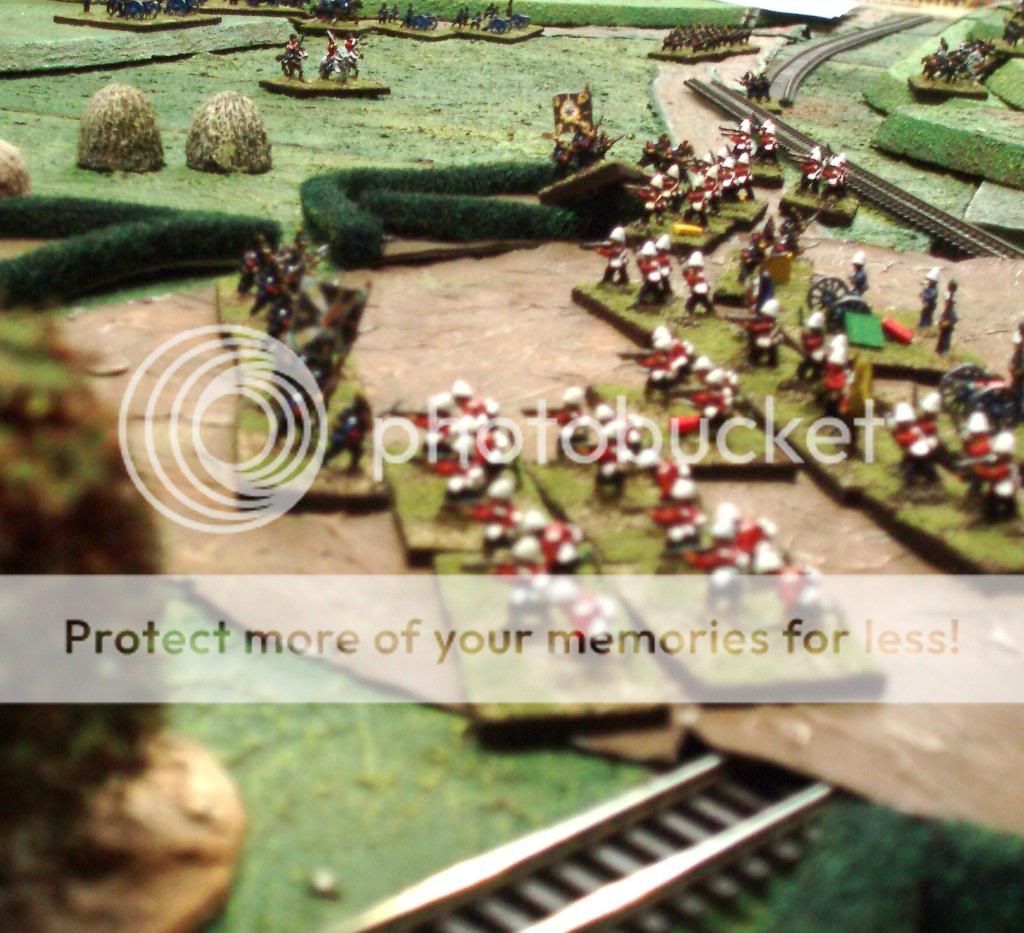
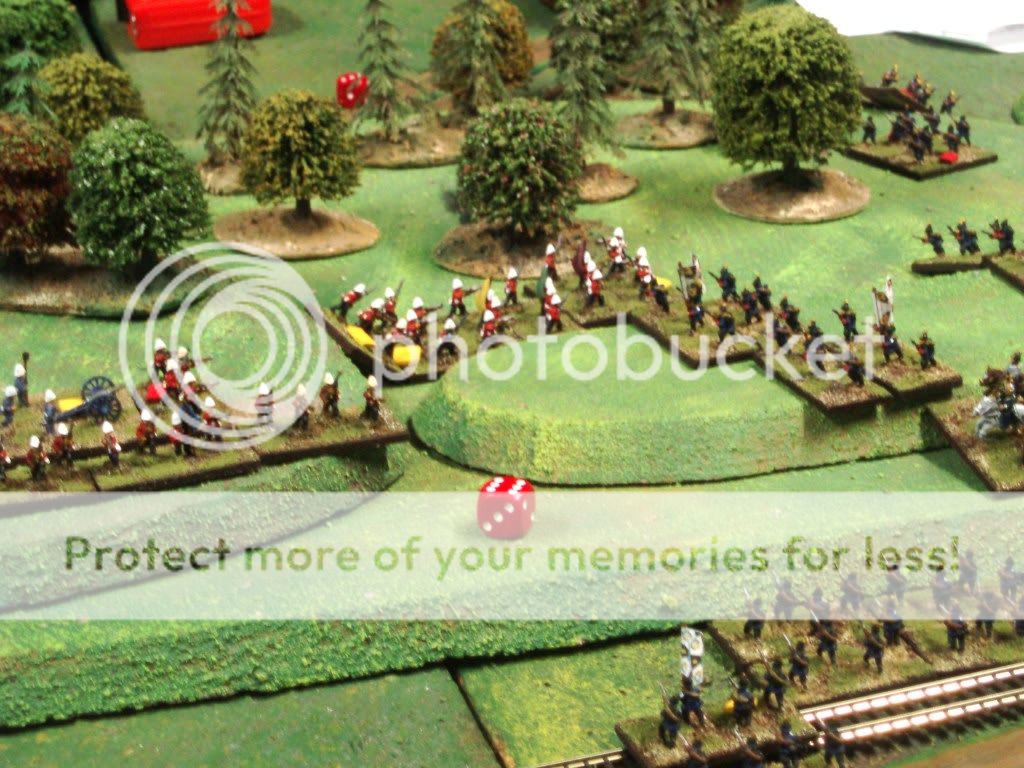
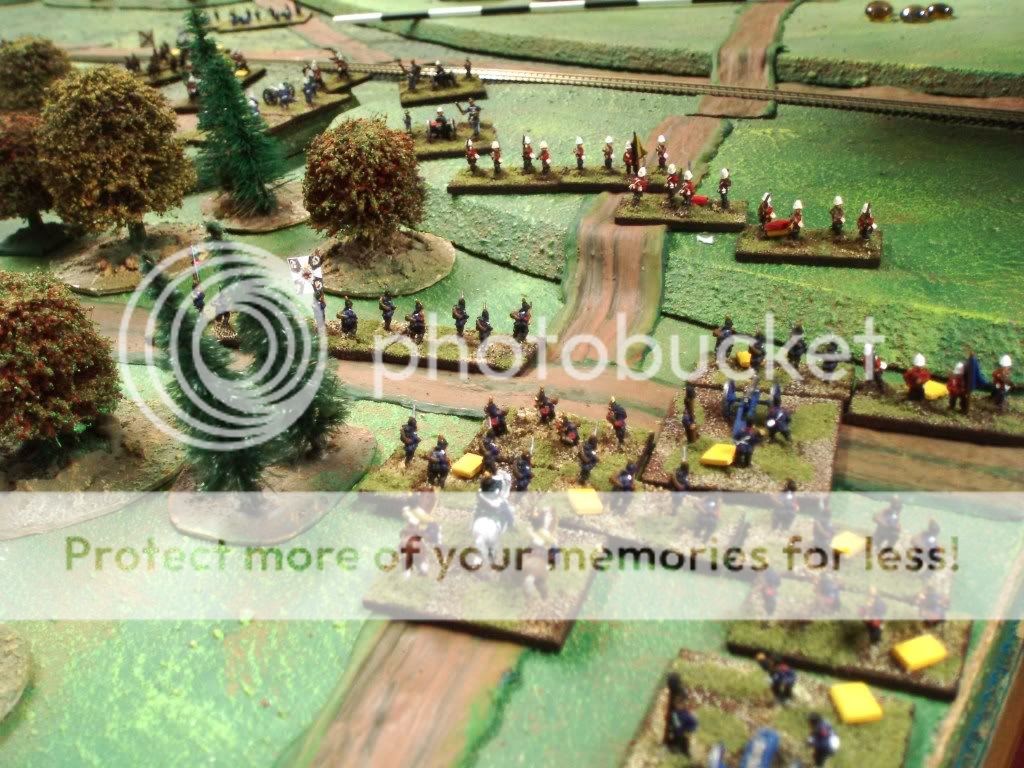
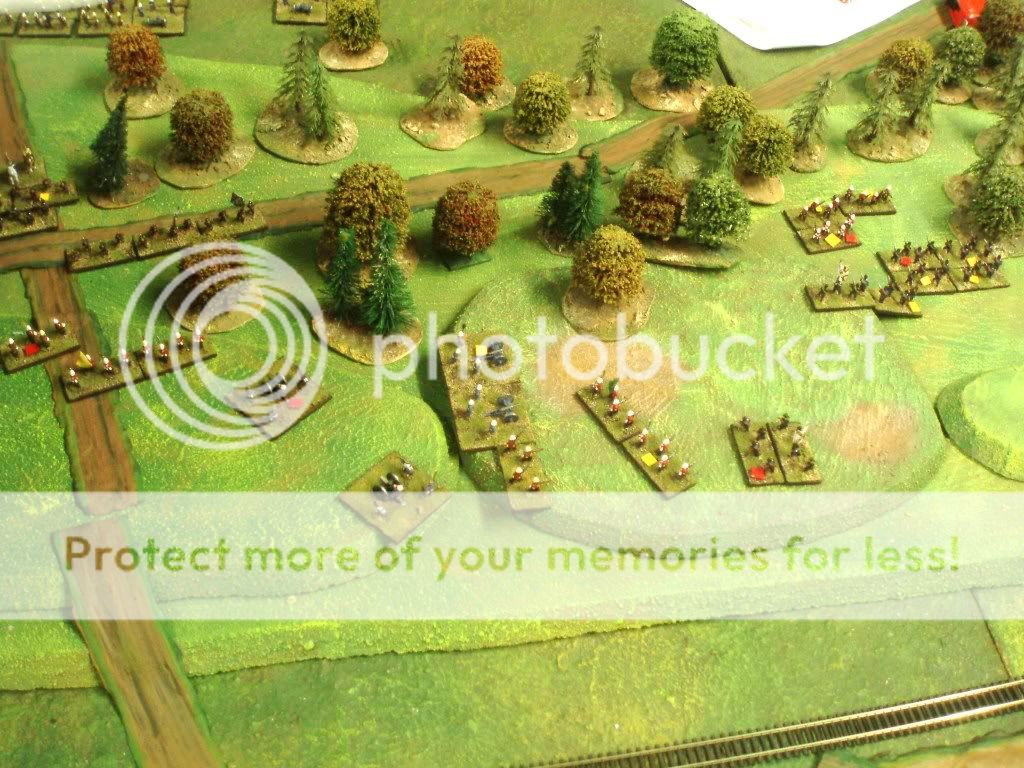
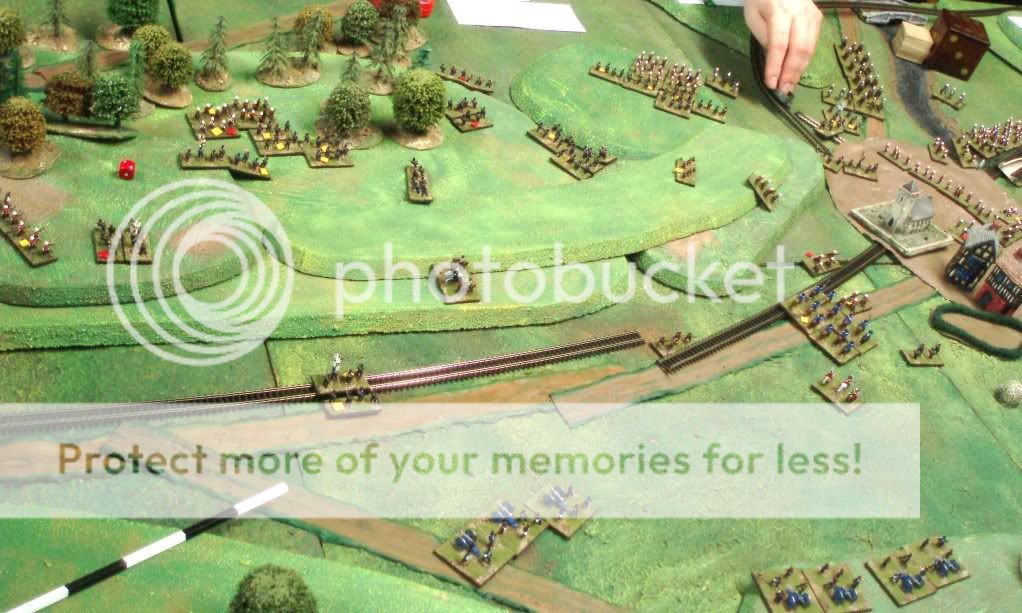


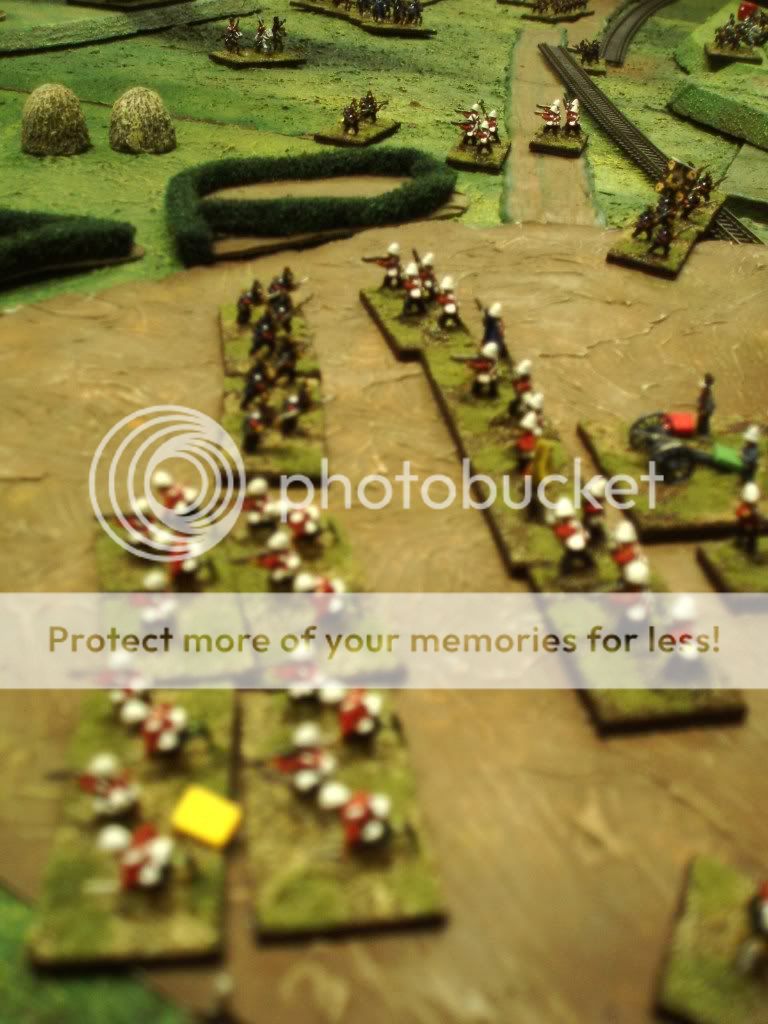

I have actually just cottoned onto, and read, The Battle of Dorking. Following this, I found your article as the first part of my (inevitable) follow-on research and have to say Bravo! I have to agree wholeheartedly with your assessment that this excellent battle report read almost exactly like Chesney's version of events, which is a quite remarkable thing (especially when one considers the infamous outcome of the 'Sealion' wargame) and testament to the author's sound understanding of things as they stood at the time.
ReplyDeleteLovely models and scenery, just a joy to read. looks like it must have been fun to play.
Now, I must get those Prussian ironclads finished so I can fight out the Battle of the Downs and see if Fritz really can take down the entire Channel Squadron in five minutes with Whitehead torpedoes....
This comment has been removed by the author.
ReplyDeleteFantastic battle! Really awesome to see the struggle at Dorking carried off the pages onto the table. Well done!
ReplyDeleteJust found this. Wonderful. What rules did you use and what organizational structure did you use for the British?
ReplyDelete